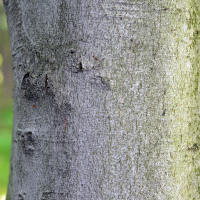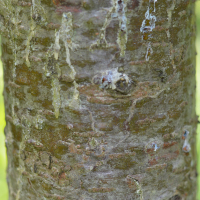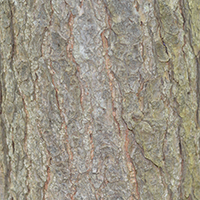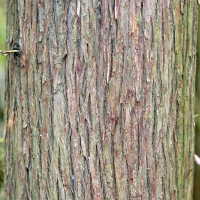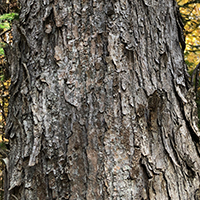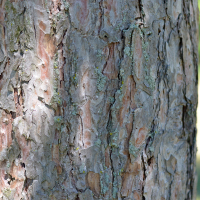A Walk in the Woods
The woods
We have some rural property outside Caledon East, Ontario. It was purchased by Joan’s grandfather after the Second World War. It was a 100 acre more-or-less square lot, but is now an ‘L’-shaped 55 acres, outlined in green in the image below. There are two cabins on the property. The all-season ‘Hill’ cabin is to the west, the summer ‘Pond’ cabin to the south. The Pond cabin is adjacent to an artificial pond Joan’s grandfather built after Hurricane Hazel in 1954.
The property is mostly wooded now. Hardwoods appear as relatively open areas in the ‘Satellite’ layer, in the north west near the Hill cabin and in the north east corner of the property. Part of the land south and east of the Pond cabin is a pine plantation. The topography layer shows a fairly extensive cedar swamp surrounding small streams running through the property.
There are a number of trails on the property. One trail goes from the Hill cabin to the Pond cabin. A second trail loops from the Pond cabin through the pine plantation and into the hardwoods. An old ‘loggers cabin’ (now just a rusted bed) marks the turning point before heading back. Just before reaching the Pond cabin, there’s a small stream and trail that heads upstream toward the Hill cabin.
The map and satellite imagery below show the property and trail. The trail is extracted from GPS location information embedded in photographs.
Trees
The Tree Atlas: South Central Region from the Ontario Ministry of Natural Resources introduces the native trees of our region. The site is presented by leaf, but I rearranged it by tree bark. Reviewing these can help identify trees in the images below. Common trees on our property incldue:
Walking
The trees in the woods have all kinds of different bark. It was fun to take a walk, and snap quick pictures as we came across different textures and colors. The pictures were a bit spontaneous. They are not particularly in focus or well-framed. I forgot to stamp the location of each in the picture. There are 84 images taken over about 96 minutes.
The animations displays the images in the order they were encountered, delayed in proportion to the time between pictures. So it is like we are encountering them in a virtual forest. Each image starts small, and grows in size as though one is walking toward it. Then we zoom in to the center of the picture, because often the texture is really fascinating. Sometimes the focus isn’t so good :(. Images appear, grow, and zoom at a more-or-less random cell on a fixed 4 x 2 grid. Choice of cells is adjusted to avoid overlap between successive images. The sequence lasts about 20 minutes, I think…
I originally introduced images at random locations. They would often grow over each other, making it difficult to focus on textures when zoomed in close. But now that the images are so structured, the display seems too rigid, something that my phone might do when reviewing an album!
The next iteration introduces trees on the left-hand side. Trees move to the right following random Bézier curves. They overlap a bit, and a strategy might be to introduce a force-directed component to keep them more separate.
Ornaments – under development.
Notes
Maps are displayed using leafletjs; the track is extracted from photos with exiftool. Property boundaries were extracted ‘by hand’ from the Assessment layer of the topographic maps available at Ontario’s Ministry of Natural Resources.
I spent effort learning to work with p5.loadImage(). The challenge
is that this is an asynchronous call – the return value is not the
image, but a promise to return it eventually. Usually p5.loadImage()
is called in the p5.preload() step, which internally ensures that
images are loaded before the sketch starts. But since I’m loading a
lot of images, I wanted to load them only for the time required in the
sketch. I did learn about JavaScript async / await, then(), and
Promise, but in the end it seemed sufficient to use the
p5.loadImage() callback to populate an array of ‘active’ images,
something like
const sketch = (p5) => {
let images = [];
p5.draw(p5) {
// Start loading any new images
if (<condition to start image display>) {
p5.loadImage(<image url>, (img) => {
// Image pushed when loaded; not blocking
images.push(img);
});
}
// Draw loaded images, often several calls to `draw()` after
// starting to load
images.forEach(img => <update & draw image>);
// Remove images that are no longer needed
images = images.filter(img => <condition to remove image>);
}
}
I’m not completely confident that the use of images.push() in the
callback is safe, e.g., because of race conditions.
I had significant problems loading larger images in my development environment (jekyll page served via ruby’s WEBrick server, using Chrome). It seemed like image loads would not complete, and after about 8 full-sized images all images remained as ‘pending’. I worked around this using smaller images; later I found that I could use large images with Safari or with VSCode Live Server without problems. Oh well.
